Have you ever wondered if your dog's food is as healthy as it could be? Many pet owners are turning to raw food diets, sparking both excitement and concern. This guide explores the raw diet trend, its benefits, and potential risks, helping you decide if it's right for your dog.
The raw diet movement, popularized by Australian veterinarian Ian Billinghurst in the 1990s, focuses on feeding dogs unprocessed foods like meat, bones, fruits, and vegetables. Proponents argue it mirrors a dog's natural eating habits, promoting healthier coats and digestion. However, critics highlight risks like bacterial contamination and nutritional imbalances.
In this article, we'll delve into the history of raw feeding, discuss its pros and cons, and provide expert insights to help you make informed decisions. Whether you're a curious pet owner or considering a switch, this guide offers a balanced view to support your dog's well-being.
Understanding the Raw Diet Movement for Dogs
The raw diet movement has gained traction as pet owners seek more natural feeding options. This approach focuses on unprocessed foods like meat, bones, fruits, and vegetables, mirroring what wild canines might eat. The movement's roots trace back to racing greyhounds and sled dogs, where raw feeding was common for performance. Over time, this practice expanded to family pets as owners noticed potential health benefits.
The Evolution of Raw Feeding Practices
Historically, raw feeding was used to enhance performance in working dogs. Today, it's adopted by many for its perceived health advantages. The shift reflects a broader trend towards natural, less processed pet food options.
The Origins of the BARF Diet
In 1993, Australian veterinarian Ian Billinghurst introduced the BARF (Bones and Raw Food) diet. He suggested raw meat and vegetables were healthier than commercial dog food. His work challenged conventional pet food formulations and influenced modern raw feeding trends.
Billinghurst's ideas resonated with pet owners seeking natural alternatives. His book became a cornerstone of the raw feeding movement, emphasizing the importance of mimicking a dog's natural diet for optimal health.
Today, the raw diet movement symbolizes a shift towards more natural pet care. While debates about its benefits continue, its popularity underscores a desire for healthier, less processed food options for pets.
Benefits and Risks of Raw Dog Food
When considering a raw food regimen for your pet, it's essential to weigh both the potential advantages and the possible drawbacks. Many pet owners report positive changes in their pets' health, such as shinier coats and improved energy levels. However, it's crucial to approach this diet with careful consideration.
Potential Health Advantages
A high-protein, high-fat diet can lead to numerous health benefits. These include improved skin health, cleaner teeth, and increased energy levels. The natural ingredients in raw meals can also contribute to a healthier digestive system. Additionally, many owners notice smaller, less frequent stools, which can be more convenient for both the pet and the owner.
Identifying Health Concerns and Risks
Despite the potential benefits, there are significant risks to be aware of. Bacterial contamination is a common issue, with studies showing that many raw samples contain harmful bacteria. Nutritional imbalances are another concern, as a poorly planned diet can lead to deficiencies. Additionally, whole bones can pose a choking hazard or cause internal injuries. It's vital to address these risks to ensure your pet's safety and well-being.
Essential Ingredients in a Raw Food Diet
A well-crafted raw food diet for pets focuses on whole, unprocessed ingredients that mirror what animals would naturally consume. This approach typically includes a mix of muscle meat, bones, and organ meats, along with smaller portions of vegetables and eggs.
The foundation of this diet is muscle meat, which provides essential protein. Bones, particularly raw and edible ones, contribute calcium and phosphorus, crucial for strong bones and teeth. Organ meats like livers and kidneys add vital vitamins and minerals, while raw eggs offer additional protein and fatty acids.
Vegetables such as broccoli, spinach, and celery are included in smaller amounts to provide fiber and nutrients. This balanced mix aims to replicate what canines would eat in the wild, ensuring they receive all necessary nutrients without the loss that comes from cooking.
Feeding raw meat preserves the nutritional integrity that can be diminished during processing. Each ingredient plays a role in supporting overall health, from shiny coats to healthy digestion. This natural approach aligns with an animal's evolutionary needs, promoting well-being through wholesome, unprocessed foods.
How to Safely Transition Your Dog to Raw Foods
Making the switch to a raw food regimen can be a great way to improve your dog's health, but it requires careful planning. Veterinarians and pet owners have noted improvements like a shinier coat and fresher breath, but caution is key to avoid digestive issues or nutritional imbalances.
Step-by-Step Transition Tips
A gradual transition is essential to prevent digestive upset. Start by mixing a small portion of raw food with your dog's current meals. A common approach is:
- Day 1: 1/8 new food, 7/8 old food
- Day 2: 1/4 new food, 3/4 old food
- Day 3: 1/2 new food, 1/2 old food
- Day 4: 3/4 new food, 1/4 old food
- Day 5: 7/8 new food, 1/8 old food
- Day 6: 100% new food
Some dogs may need more time, especially if they've been on processed food for a long time. Patience is important to avoid shocking their system.
Monitoring Your Dog’s Health Changes
Keep an eye on key health indicators during the transition. Improvements in coat quality, digestion, and energy levels are common benefits. However, watch out for potential problems like digestive upset or nutrient imbalances. If you notice any issues, consider slowing down the transition or consulting a vet.
By following these steps and monitoring your dog's health, you can help ensure a smooth and beneficial transition to a raw food regimen.
Balancing Nutritional Needs in a Raw Diet
Ensuring your pet gets all the necessary nutrients is crucial for their health. A well-balanced raw diet requires careful attention to detail to avoid deficiencies and ensure optimal health.
Achieving the Correct Calcium to Phosphorus Ratio
Maintaining the ideal calcium-to-phosphorus ratio (approximately 1.4:1) is vital for your pet's bone health. Muscle meat is rich in phosphorus, while bones provide calcium. An imbalance can lead to serious health concerns, such as bone deformities, particularly in puppies. Studies emphasize that a ratio of 1:0.7 ensures proper skeletal development.
Vitamin, Mineral, and Supplement Considerations
Vitamins and minerals like vitamin E, zinc, and iodine are essential for a complete diet. Homemade raw diets often require supplementation to fill nutritional gaps. Commercial raw diets may offer more consistent nutrition, but it's important to choose a reputable brand. A varied diet with different protein sources ensures a broad intake of micronutrients.
- Include a mix of muscle meat, bones, and organs for balanced nutrition.
- Supplement with vitamins and minerals as needed to prevent deficiencies.
- Choose a variety of proteins to ensure a wide range of nutrients.
By carefully balancing these elements, you can create a nutritionally complete raw diet that supports your pet's overall health and well-being. Always consult with a veterinarian to ensure your pet's specific needs are met.
Navigating Raw Food Safety and Hygiene
Maintaining proper hygiene when handling raw meat is crucial to ensure the health and safety of both your family and your pet. The FDA and veterinarians emphasize the importance of strict hygiene practices to prevent bacterial contamination, which can have serious consequences for both pets and their owners.
Proper Handling and Storage of Raw Meat
Handling raw meat requires careful attention to detail. Always store raw meat in sealed containers and keep it separate from other foods to prevent cross-contamination. When defrosting, place the meat in a covered container on the bottom shelf of the refrigerator to avoid juices dripping onto other foods. Wash your hands thoroughly with soap and warm water before and after handling raw meat, and ensure all utensils and surfaces are cleaned and disinfected.
Preventing Bacterial Contamination
Bacterial contamination is a significant risk when feeding raw meat. Salmonella, E. coli, and Listeria are common pathogens that can be present in raw meat. To minimize this risk, always purchase high-quality meat from reputable sources and store it properly. Separate raw meat from ready-to-eat foods, and use dedicated cutting boards and utensils for raw meat preparation. After preparing raw food, sanitize all surfaces with a pet-safe disinfectant.
Special considerations are necessary for families with young children or immunocompromised individuals, as they are more susceptible to foodborne illnesses. Keep raw meat and pet food away from areas where human food is prepared, and ensure children understand the importance of washing their hands after interacting with pets or their food.
By following these safety protocols, you can help protect both your puppy and your family from potential health risks associated with raw feeding. Remember, a clean and organized approach to handling raw meat is essential for maintaining a safe and healthy environment for everyone.
Comparing Commercial vs. Homemade Raw Diet Options
When deciding how to feed your canine, you have two main choices: commercial raw diets or homemade raw food. Both options have their pros and cons.
Pros and Cons of Ready-Made Diets
Commercial raw pet food offers convenience and nutritional balance. These products often meet AAFCO standards, ensuring safety and quality. They are easy to store and serve, making them ideal for busy individuals. However, they can be expensive and may not allow for customization.
On the other hand, homemade raw diets provide customization but require time and nutritional knowledge. Preparing meals from scratch can be costly and time-consuming. Without proper planning, your pet might miss essential nutrients.
Consider your lifestyle and your dog's needs. If convenience is key, commercial options are a great choice. For those who prefer a tailored approach, homemade diets offer flexibility but demand more effort.
Raw Diet for Dogs: Expert Insights and Research
Expert opinions and scientific studies offer valuable insights into the benefits and risks of feeding your pet a natural regimen. Veterinary experts like Doug Knueven, DVM, and researchers such as Lisa M. Freeman, PhD, provide diverse perspectives on this topic.
Veterinary Perspectives on Raw Feeding
Veterinarians highlight improvements in skin health and dental hygiene, noting shinier coats and cleaner teeth in pets. However, they also caution against potential issues like nutritional deficiencies and bacterial contamination.
Scientific Studies and Nutritional Evaluations
Research shows that while these diets can enhance skin quality and reduce dental issues, they may lack essential nutrients if not properly balanced. Studies emphasize the importance of a well-formulated recipe to avoid deficiencies and ensure optimal health.
Consulting with a veterinarian is crucial to navigate these complexities and make informed decisions for your pet's well-being.
Final Reflections on Embracing a Natural Dog Food Diet
As we conclude our exploration of natural feeding options, it's clear that a well-crafted diet focusing on quality ingredients can significantly impact your pet's health. High-quality muscle meat, fresh fruit, and balanced nutrients are essential for supporting your dog's growth and overall well-being.
Avoiding grains and focusing on whole foods ensures your pet gets the nutrients they need without unnecessary fillers. This approach not only supports healthy growth but also aligns with their natural eating habits, promoting vitality and a vibrant coat.
When considering a transition, it's crucial to prioritize quality and balance. Consulting with a veterinarian can help tailor the diet to your dog's unique needs, ensuring a smooth and beneficial switch. By embracing a thoughtful and natural approach, you're investing in a healthier, happier pet.
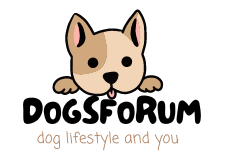

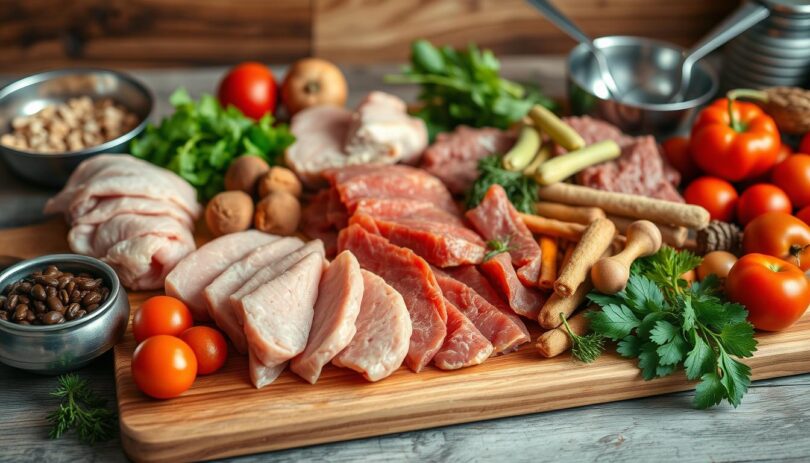
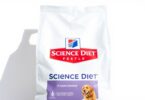
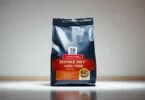
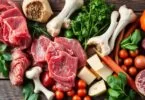
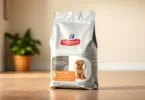

Leave a Comment